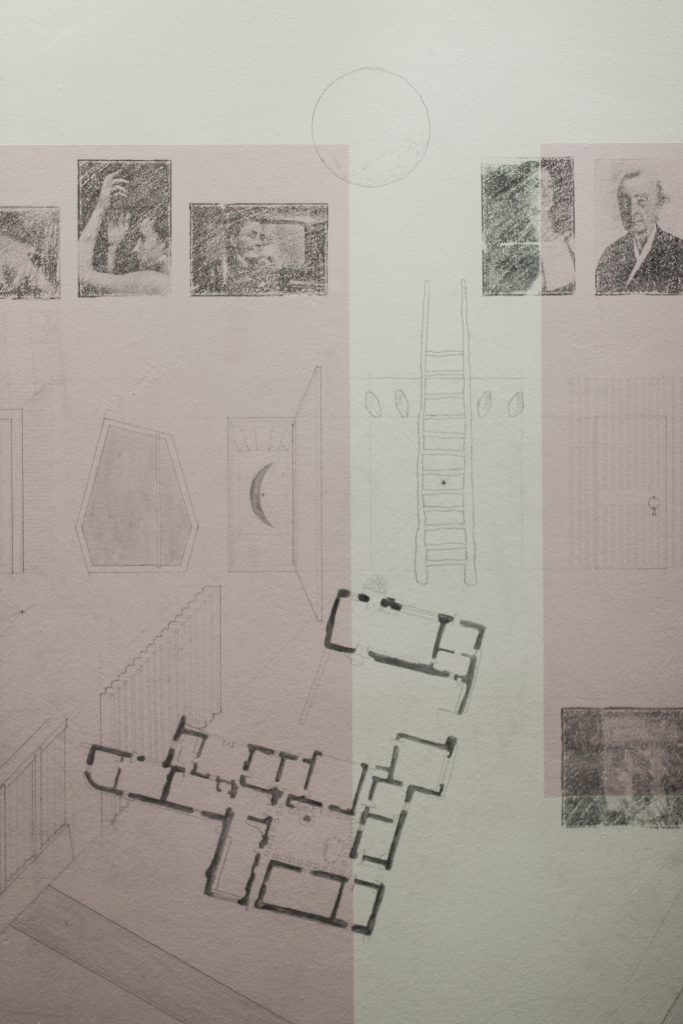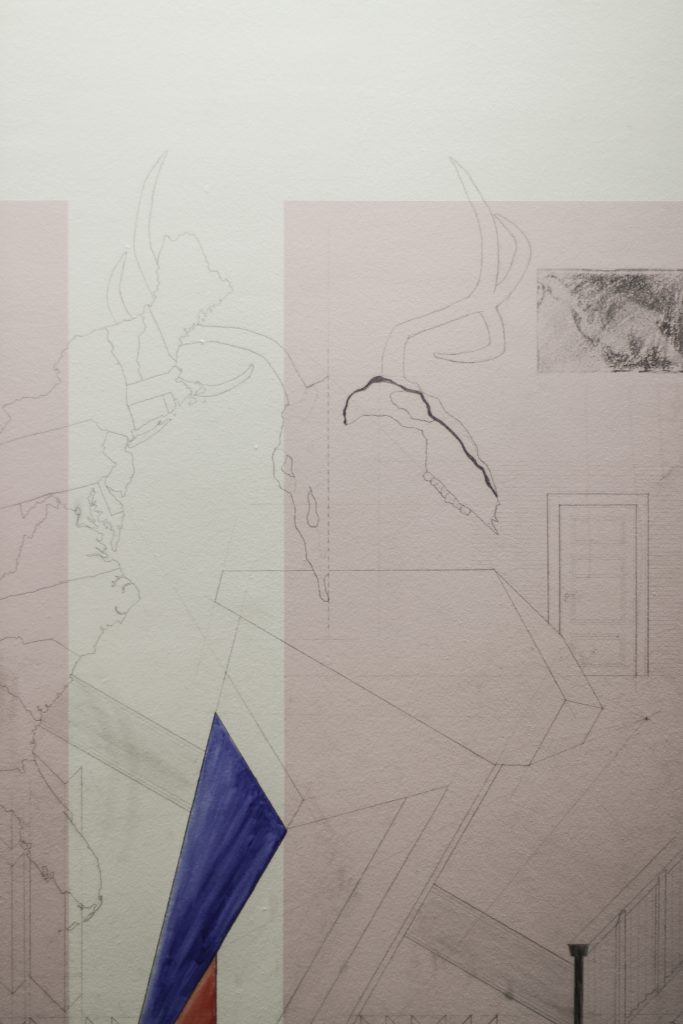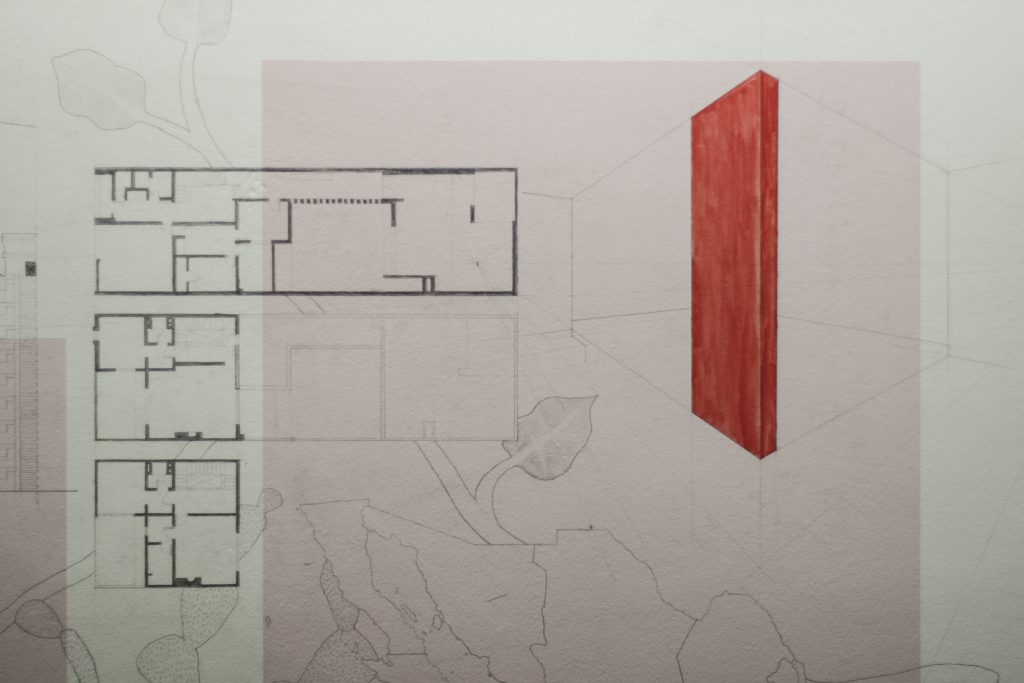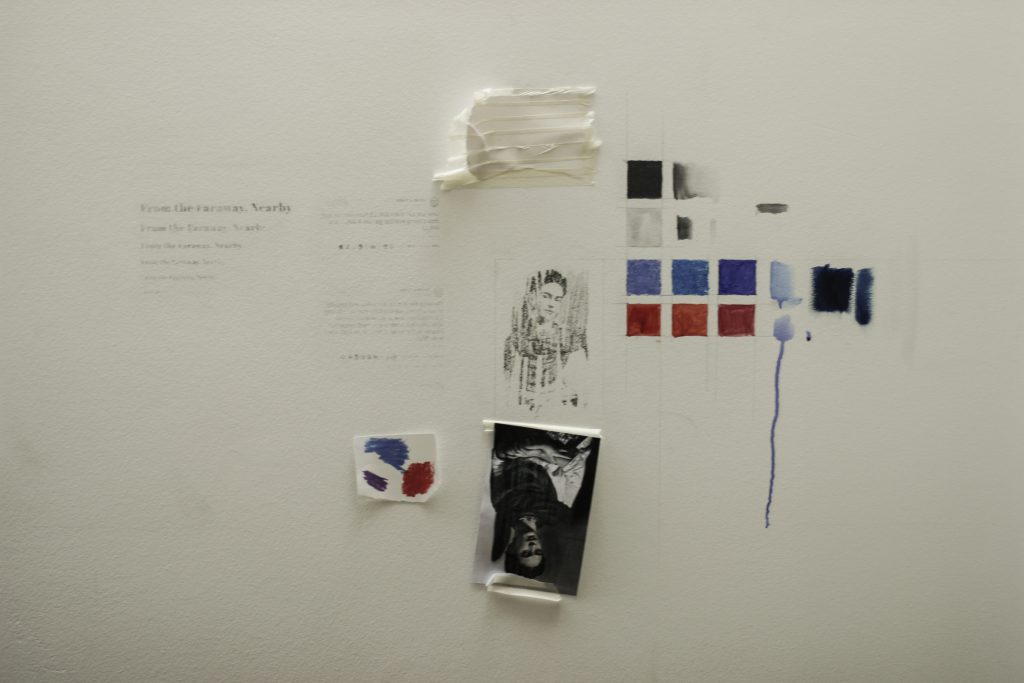Commission to open the annual Drawing of the Year contest at Aarhus School of Architecture
The wall drawing A Stranger in a Foreign Land simultaneously served as a catalogue, a sketchbook, initial research and a generator for the first conceptual ideas for my on-going thesis project. It was a reflection upon the impressions from a month-long study trip to the Southwestern U.S. and Mexico, and sought to internalise the most powerful recollections of the contentious border region through the medium of (re)drawing them.

The drawing seeks to decipher and condense a multitude of impressions. It’s title – A Stranger in a Foreign Land – refers to the act of displacement, as well as the duty of the architect to empathise with spaces, cultures and issues beyond our ordinary experiences.
The drawing itself is an interpretation, a wondering and a reflection, thus becoming a point of departure for the thesis project. It is to be read from its extremities towards the center, as the registrations of landscape, art and architecture transmute into research on Georgia O’Keeffe and Frida Kahlo. Both artists are utilised as cultural representatives of their respective countries, and through the contemplation of their domesticity and worldview the first spontaneous and immediate ideas of the project emerge.

I believe that the potential of drawing goes beyond the communication and representation of an architectural project. Most importantly, it begins to establish a connection between our imagination and body – when drawing, no matter what technique one uses, one makes manifest in the world something that only existed in the mind’s eye before. In this way, the discipline of architecture becomes as much of a craft as that of the artist or the musician, a practical skill that must be honed. Digital drawing tools have become an integral part of the professional architect’s life, but we must remind ourselves not to let post-human algorithms and parametrics control our hand.

As drawing is the means by which the intangible dreams of the architect are expressed through the mediation of the body, it is vital that these digital tools are not allowed to stunt the visceral relationship between the imaginary and the corporeal – something which is encouraged and refined by the directness of the analogue drawing.

In the end, whether we draw with pencil or CAD, architecture without the human body cannot be architecture.
